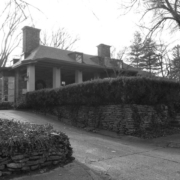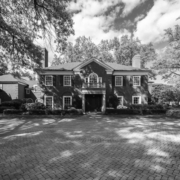Historical Architecture of Grosse Pointe – Landscape Architect, Thomas Church
Last week we visited a superb Mid-Century Modern home – 515 Lake Shore, designed by Wallace Frost for Almadus DeGrasse Wilkinson in 1956-1957. It was only one of two modern homes Frost designed in Grosse Pointe; the other was 280 Vincennes. This week we stay with 280 Vincennes, to present the history of the world-renowned landscape architect Thomas Dolliver Church who designed the garden. Thomas Church was a coveted landscape architect whose reputation and influence were worldwide. During his career he completed over 4,000 projects – private gardens (primarily in California) and in 24 other states, along with many non-residential landscape commissions.
280 Vincennes, completed in 1954, is a special property. Original owner Harry Lynn Pierson Jr. not only hired nationally recognized architect Wallace Frost to design the 5,120 sq ft home, but also hired Hilary H. Micou to build it, and commissioned Thomas Church to design the garden. It could well be one of only two projects in the state of Michigan that Church worked on during his long and distinguished career.
The garden at 280 Vincennes was listed as a Thomas Church project from an article in the Detroit Free Press (Jun 12, 1959). The article presented the Detroit Garden Center’s annual pilgrimage tour that featured 10 gardens in Grosse Pointe, in June 1959. Both 280 Vincennes and 515 Lake Shore were part of the tour. It was reported 280 Vincennes had a pool and a fountain, and “the garden was planned for easy maintenance.” Other gardens in Grosse Pointe that were part of the tour were: 735 Lake Shore; 635 Lake Shore; 40 Fairford; 268 Provencal; 242 Provencal; 193 Ridge; 147 Lake Shore and 37 Edgemere. Special features of the gardens were reflecting pools, statuary, a sunken garden, fountains, and terraces. Source: Detroit Free Press (June 12, 1959). Image courtesy of: Katie Doelle
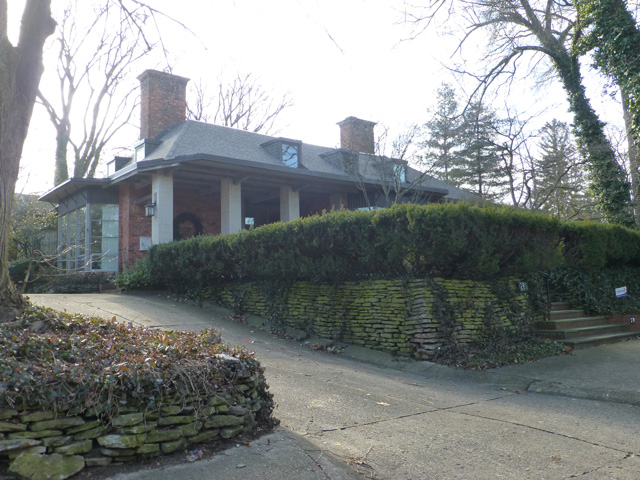
Thomas Church was born in Boston in 1902 and spent his childhood in the Ojai Valley of southern California. The family then moved to Berkely. It was reported “at the age of 12 Church made his first garden for his mother on an open lot adjacent to their home.” Following high school Church studied at the University of California, where he was expected by his family to major in law. We understand he took a course in the history of garden design at the College of Agriculture and was so intrigued that he changed his direction and graduated with a degree in landscape architecture in 1922. Source: Gardens are for People by Thomas D. Church, Grace Hall, Michael Laurie. Thomas Church then continued his education at Harvard University’s Graduate School of Design and was a recipient of the Sheldon Travel Scholarship which gave him the opportunity to spend six months in Italy and Spain. Following his return to the United States in 1927, he taught for a year at Ohio State University before returning to the Bay Area in 1929. In 1932, Church opened an office in San Francisco where he spent his entire career. Image courtesy of: ced.berkeley.edu
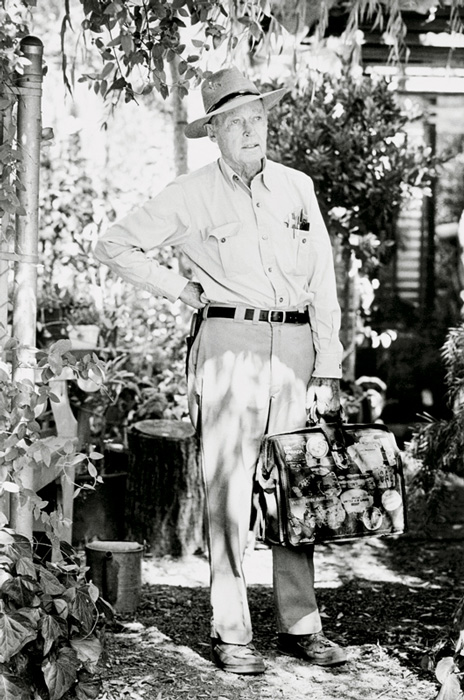
It is acknowledged that up until the 1930’s Church’s designs could be described as quite conservative. However, after another trip to Europe in 1937 (to study the work of Le Corbusier and the Finnish architect and designer Alvar Aalto), he began a period of experimentation with new forms. During the 1940’s Thomas Church was described as “the last great traditional designer and the first great modern designer.” It is stated that “his gardens typically embodied several basic concepts, that included: careful siting and orientation of the house with regard to the sun, views, exposure, existing trees, and a distinct sequence of arrival including entrance drive, parking area, and the front door; a direct connection between house and garden.” Source: Source: Gardens are for People by Thomas D. Church, Grace Hall, Michael Laurie. Thomas Church
From research by the University of California we understand “Church designed many small, town gardens. In all cases, the gardens were reflections of the personality and preferences of the client, the features of the site, and the architecture of the house. Although best known for garden design, Church’s practice at various times included larger commissions. He designed open spaces for housing, industrial plants, and hospitals.” Source: University of California. This included one of his most important works, his involvement with the landscape design at the General Motors Technical Center in Warren. Completed in 1956, it is believed this was his only other project, aside from the garden at 280 Vincennes, in the state of Michigan.
It is widely acknowledged that while Church contributed aspects of the landscape design at the Technical Center, he was not the design leader for it. That honor went to the world-renowned architect Eero Saarinen who hired Church as a consultant on the project. Together they designed the west side of the Technical Center, creating a high-style modernist landscape. The 326-acre site features a 22-acre rectilinear artificial lake, four islands of weeping willows, two spectacular fountains (that formed a wall of water 115 feet long and 50 feet high), and a shining water tower that rises 132 feet above the surface of the water. The duo included a linear arrangement of trees, open lawns, low evergreens, and landscaped parking lots. “The resultant massive tree planting reinforced the rectangular plan and produced a sense of total unity between the international style tech buildings, the massive reflecting pool, and the site. It is a fine example of Church’s capacity for bold understatement.” Source: Gardens are for People by Thomas D. Church, Grace Hall, Michael Laurie. Images courtesy of: NY Times; Library of Congress (x2).



The original owner of 280 Vincennes, Harry L. Pierson Jr., was born in Detroit on 13 July 1894. He married Mary Elizabeth Whitehead in January 1920, and together they had two daughters. Having served in World War I, he went to work for the Packard Motor Car Co., Detroit, as a shop worker, and during 1920-22 he was assistant to the general superintendent of the company. In 1923, he became associated with the Detroit Harvester Co. as secretary and treasurer. Mr. Pierson was then elected president of the company in 1930, and remained in the office until 1951, when he became chairmen of the board. He was also a director of the Cranbrook School for Boys (from 1926 to 1942, which would give him a direct connection to the architect of the Tech Center Eero Saarinen) and of the Grosse Pointe Day School (from 1941 to 1950).Throughout his career he was highly connected in the City of Detroit, sat on the board of multiple organizations, and was a member of all the major clubs in the area. Prior to commissioning 280 Vincennes, the Pierson’s had hired nationally recognized architect Henry Toombs to design their home at 275 Voltaire Place in 1935. That property was also built by Hilary H. Micou. Harry Pierson passed in February 1988. Source and image: www.findagrave.com
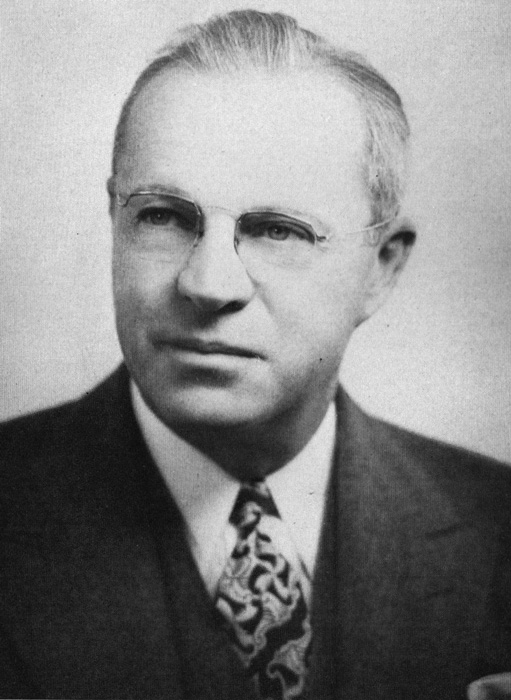
In 1951, Thomas Church was awarded the Fine Arts Medal, for Landscape Architecture, by the American Institute of Architects. During his career his work was widely publicized in journals, through his first book, Gardens Are for People (published in 1955), and in his second book Your Private World (published in 1969). He retired in 1977, and passed on 30 August 1978.
His work at 280 Vincennes is incredibly rare indeed. If anyone has additional info about this garden, we would love to hear from you.
*Photos courtesy of the Higbie Maxon Agney archives unless stated.
** Research, information, and data sources are deemed reliable, but accuracy cannot be fully guaranteed.
*** So far, we have not found 280 Vincennes listed in the Thomas Church archives (there are over 4000 projects).
Written by Katie Doelle
Copyright © 2024 Katie Doelle

